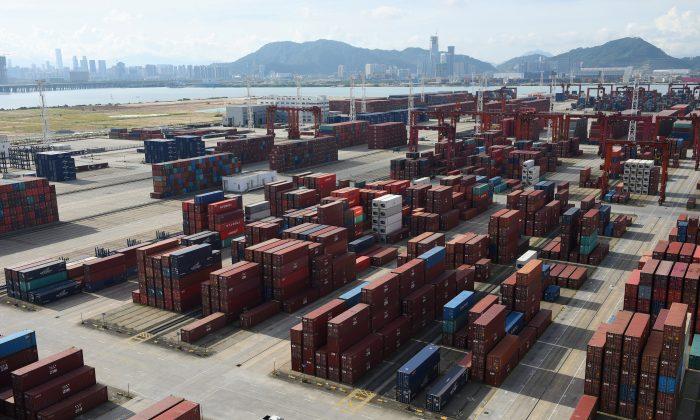BEIJING—China’s export-dependent cities and provinces are scrambling to provide relief to exporters, stabilize employment, and avert the possibility of social unrest as an intensifying trade dispute with the United States threatens to further erode business.
Guangdong, China’s biggest province by gross domestic product, this week offered to cut corporate taxes, slash electricity prices, and reduce transport and land costs as additional U.S. tariffs since July exposed Chinese manufacturers to the prospect of empty order books.
The tariffs have come at a particularly bad time for the southern province, which is in the midst of an economic restructuring as it tries to move away from low-end, labor-intensive manufacturing.
The shift has already led to job losses.
Fujian, another big-exporting province on the coast, unveiled a similar package of measures in August to soften the blows of the trade war.
The plight of the provinces is just a taste of what could come if the United States carries out its threat to impose additional tariffs on all of its Chinese imports.
All-out U.S. retaliation would scuttle China’s plan to pivot away from basic industries to higher-value manufacturing, and could result in job losses in the hundreds of thousands, according to one private estimate.
“To some, this is a microcosm of what could happen to other export-dependent provinces should Trump roll out the full tariffs,” said Jonas Short, head of Beijing office at brokerage Everbright Sun Hung Kai.
“It’s also structural—cost rises due to land usage, as well as social security and funding pressures. But also the shock of these tariffs acted as a double whammy.”
Cities Under Siege
Guangdong’s exports fell 2 percent in the first seven months from a year earlier, with shipments of machinery—accounting for more than half of its exports—up only 2.2 percent.Three Guangdong cities—Zhongshan, Foshan and Shenzhen—are racing to meet criteria for a program under which exporters, both domestic and foreign-owned, are exempted from a value-added tax of 16 percent.
Small firms with no export licenses can also bundle their products with trading firms that have permits.
Zhongshan, which shares the Pearl River Delta with Guangzhou and Shenzhen, is especially vulnerable, being one of the Chinese cities most dependent on U.S. customers.
Directly in the line of fire is Zhongshan’s Guzhen district, the largest production base of lighting fittings in China.
U.S. tariffs have already hit makers of light-emitting diodes (LEDs). The Trump administration is readying more duties on $200 billion worth of Chinese imports that will include most lighting products.
The finance ministry said last week it would raise tax rebates on more than 300 products including LEDs, semiconductors, and machinery.
“The trade war is partly to be blamed for the declining exports,” said a businessman who runs a trading company in Zhongshan who only gave his surname Xu.
“The Zhongshan government is applying for the program because of the fall in exports.”
Zhongshan’s exports slumped 21.3 percent in the first half of the year with the customs agency attributing that to factors including the trade tensions, which started to flare in March. Exports to the United States slumped 19 percent.
The Zhejiang city of Yiwu—the largest wholesale market for general merchandise exports—was the first to join the program, in 2013. It has helped double the city’s exports that year, according to official data.
But there is no guarantee.
Guangzhou joined the program last year, and exports grew 9.1 percent in 2017. Since then, its exports have fallen. Shipments declined 8.8 percent in the first seven months of this year.
The Zhongshan government said the commerce ministry had not yet approved its application to join the program.
The cities of Wenzhou and Quanzhou, in the provinces of Zhejiang and Fujian, are also looking to join the program, with Wenzhou aiming to boost its exports by $2 billion annually.
Job Concerns
JPMorgan estimated China could lose 700,000 jobs if the United States imposes 25 percent tariffs on $200 billion worth of Chinese exports, and if China were to retaliate by devaluing its currency by 5 percent and increasing levies on U.S. goods.From January to July, the number of jobs at Guangdong’s industrial firms fell 4.5 percent from a year earlier to 13.15 million, Guangzhou’s statistics bureau told Reuters.
Xu Yangneng, general manager at an LED firm in Foshan City in Guangdong, said his company stopped its export business after the tariffs in July as profits were being squeezed, and would focus on the domestic market instead.
“Business at many factories in Foshan whose biggest market is the U.S. is quite slow,” Xu said.
“Some just put their workers on holiday or simply lay them off.”
By Stella Qiu & Ryan Woo






Friends Read Free